Bhanole is an easy to make delicious and healthy savoury cake which can be had as a snack or as a Starter……..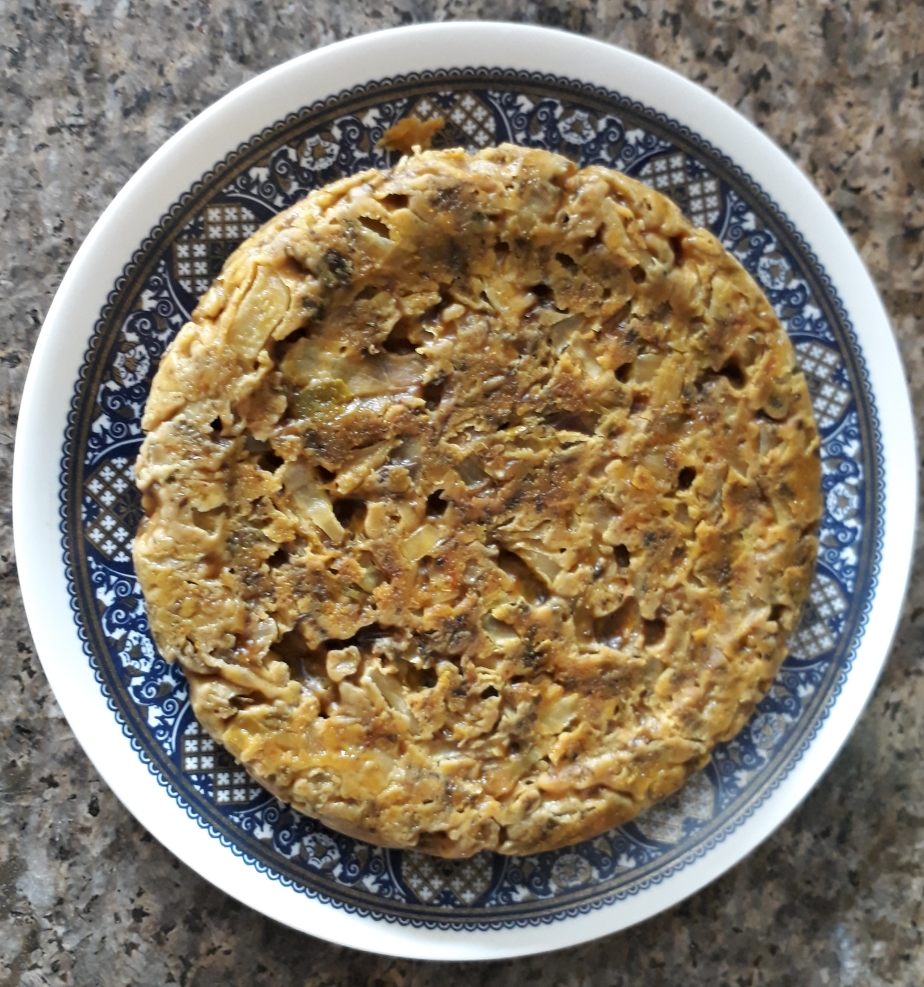
INGREDIENTS : 1 small Cabbage, 1 onion, 1-2 green chillies, fresh coriander, 1 coconut, 1 tsp jaggery, 1/2 cup besan (chickpea flour), 1/4 tsp baking soda, 1/4 tsp turmeric powder, 1/2 tsp red chilli powder, 1/4 tsp cumin powder, 1/2 tsp coriander powder, 1/4 tsp Goda Masala, a pinch is asafoetida, salt to taste, 1 tbsp oil.
DIRECTIONS : Slice the cabbage to get 1 cup……… Slice the onion too……. Chop the green chillies finely…….. Chop fresh coriander to get approximately 1/4 cup……… Grate the coconut…….. Add hot water and keep aside for some time…….. Extract thick coconut milk through muslin cloth to get about 1/4 cup…….. Oil a container and keep aside…… Now mix sliced cabbage, sliced onion, chopped green chillies and coriander, jaggery, turmeric powder, red chilli powder, cumin powder, coriander powder, Goda Masala, asafoetida and salt……… Add thick coconut milk…… Crush and mix thoroughly with hand……. Now add besan and baking soda to get a batter…….
Add thick coconut milk…… Crush and mix thoroughly with hand……. Now add besan and baking soda to get a batter……. Pour the batter in the oiled container…….. Take a pressure cooker……. Pour some water in it…… Keep the container in the pressure cooker……..
Pour the batter in the oiled container…….. Take a pressure cooker……. Pour some water in it…… Keep the container in the pressure cooker…….. Steam it in the pressure cooker without whistle for about 50 minutes to 1 hour……..
Steam it in the pressure cooker without whistle for about 50 minutes to 1 hour…….. When it is done let it cool…….
When it is done let it cool……. Cut bhanole into squares and serve.
Cut bhanole into squares and serve.
NOTE : Bhanole can be served as it is or it can be shallow/deep fried……. The batter should have the consistency a little thicker than fritters…… Instead of steaming, one can bake bhanole at 175*C for at least 1/2 an hour.


 Mix thoroughly adding coconut water little by little…..
Mix thoroughly adding coconut water little by little….. Cover and keep aside for at least two hours….. Fry the resultant batter like fritters……
Cover and keep aside for at least two hours….. Fry the resultant batter like fritters…… Serve hot.
Serve hot.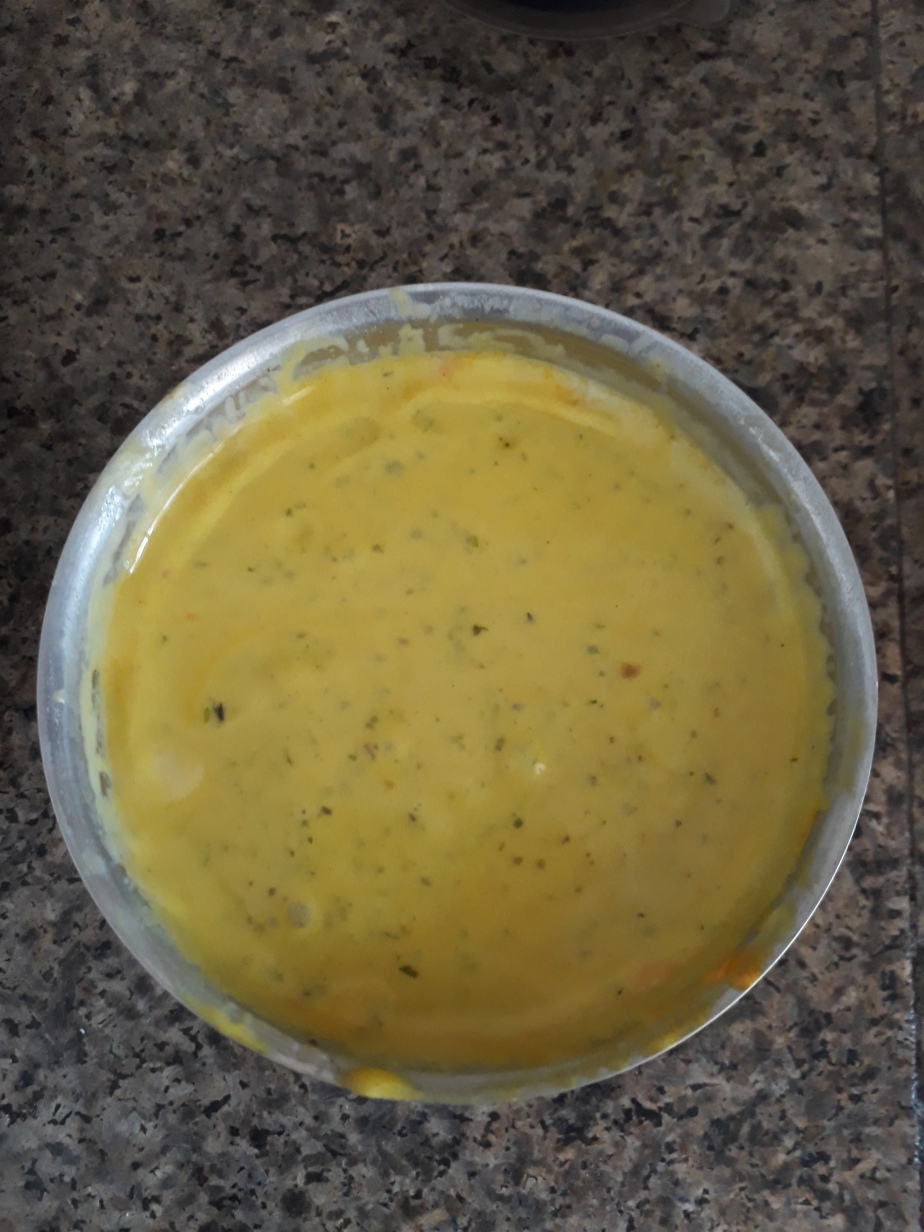 Though not the traditional version, it actually comes out very well…..
Though not the traditional version, it actually comes out very well….. Serve hot chutney.
Serve hot chutney.
 When the milk starts boiling, reduce the flame…… Keep stirring the milk……. In the meantime, wash the poha…..
When the milk starts boiling, reduce the flame…… Keep stirring the milk……. In the meantime, wash the poha….. Soak the poha in water for five minutes…… After about ten minutes of boiling the milk add soaked poha…… Stir…… After about five minutes add a pinch of saffron…….
Soak the poha in water for five minutes…… After about ten minutes of boiling the milk add soaked poha…… Stir…… After about five minutes add a pinch of saffron……. Stir…….. After about five minutes, add sugar…… Stir……. Crush the cardamoms………
Stir…….. After about five minutes, add sugar…… Stir……. Crush the cardamoms……… When the kheer reaches desired consistency, add crushed cardamoms, cashew nuts and resins…….
When the kheer reaches desired consistency, add crushed cardamoms, cashew nuts and resins……. Stir…….. Remove from heat…… Cool……
Stir…….. Remove from heat…… Cool……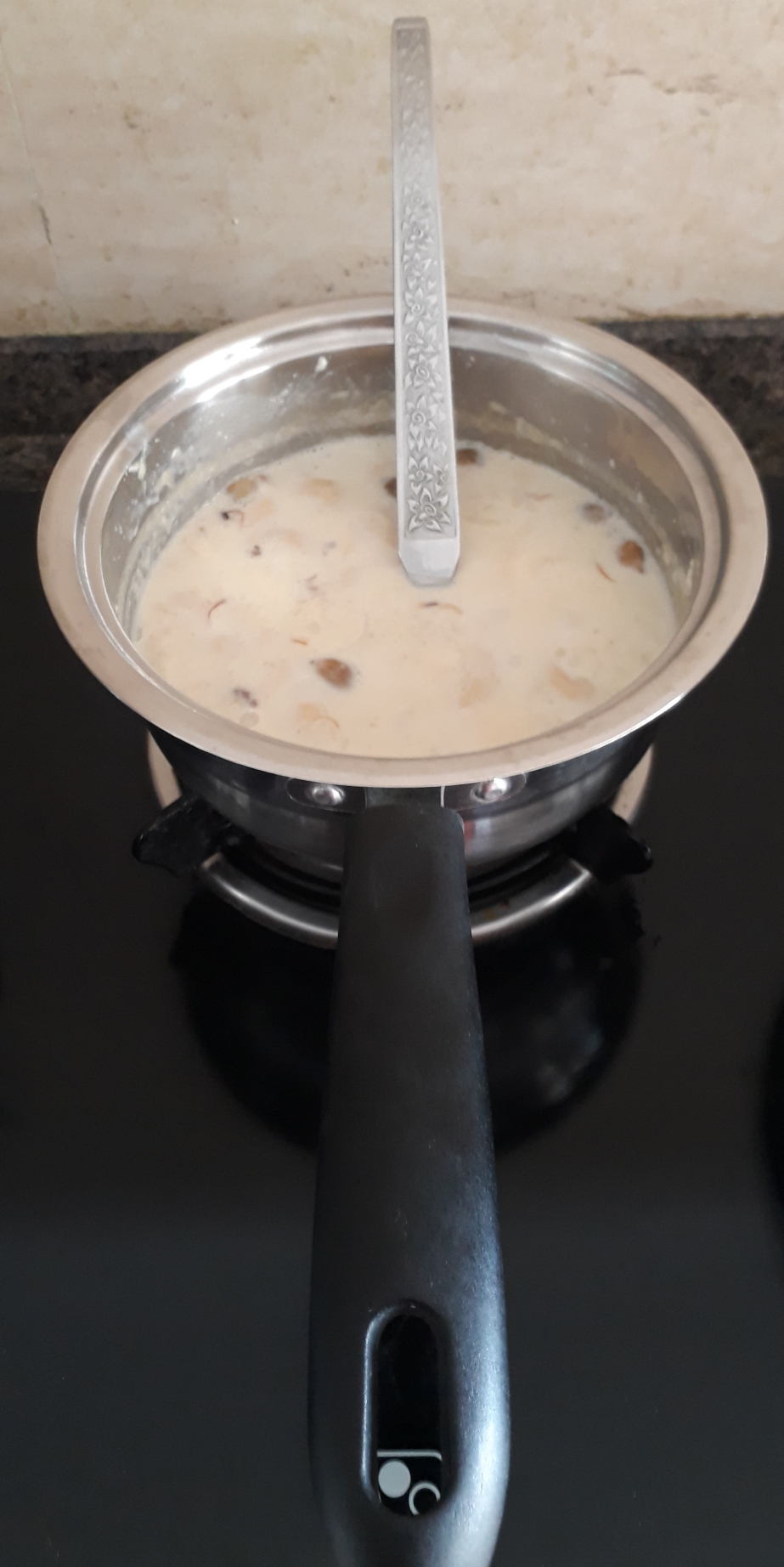 Refrigerate….. Serve garnished with cashew nuts & resins.
Refrigerate….. Serve garnished with cashew nuts & resins.
 Cover…… Let the dough rest for at least half an hour……..
Cover…… Let the dough rest for at least half an hour…….. Heat oil……. Make balls from the dough……..
Heat oil……. Make balls from the dough…….. Apply a little oil to the palms…….Take a dough ball……..
Apply a little oil to the palms…….Take a dough ball…….. Press between two palms…….
Press between two palms……. Vade should not be too thick nor too thin……
Vade should not be too thick nor too thin……  Deep fry the pressed Vade till golden………
Deep fry the pressed Vade till golden……… Take out and keep it on tissue to soak excess oil……. Serve hot.
Take out and keep it on tissue to soak excess oil……. Serve hot.


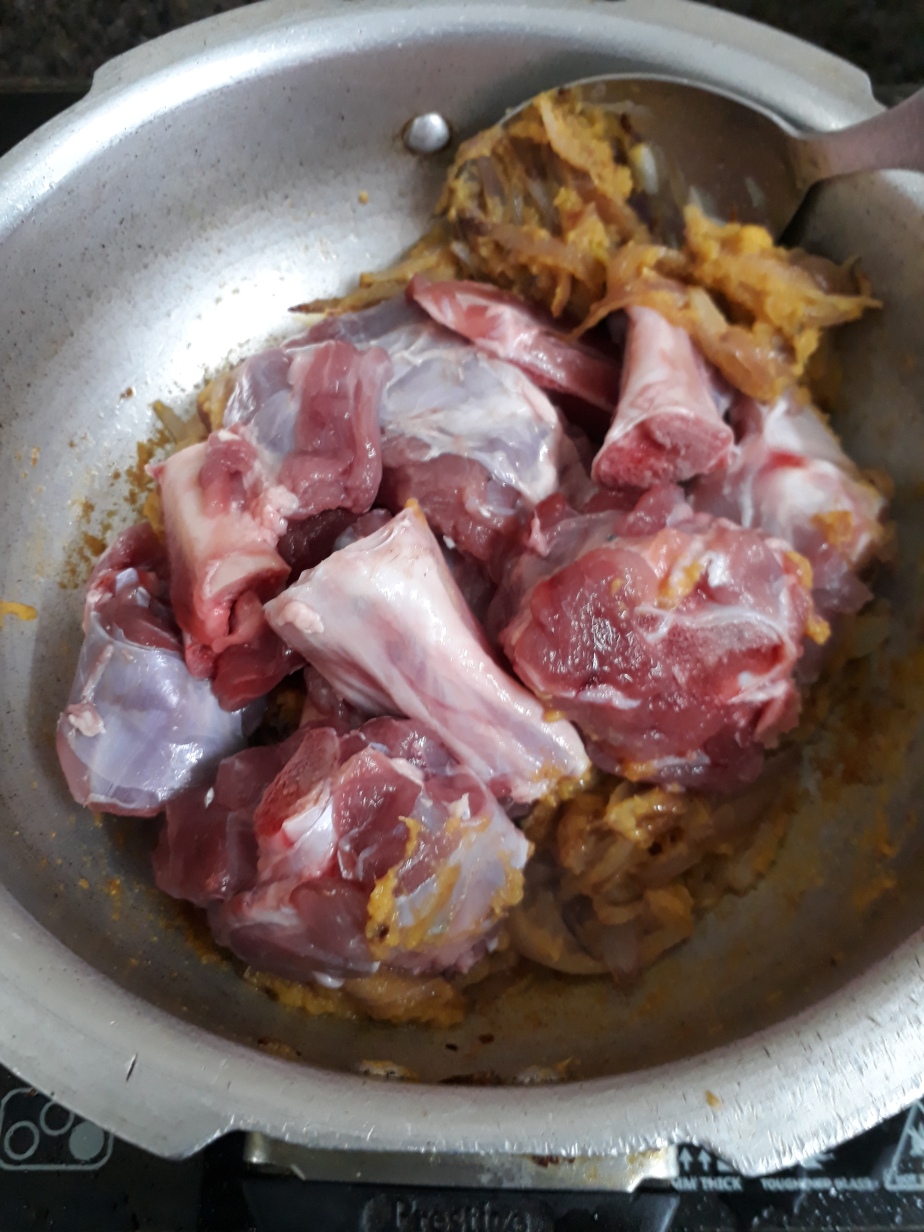
 Sauté till the mutton is well coated…….. Add potatoes and 1 cup water…….
Sauté till the mutton is well coated…….. Add potatoes and 1 cup water……. Cover and cook till mutton is done and the gravy is thick…….. Add ghee…… Stir……
Cover and cook till mutton is done and the gravy is thick…….. Add ghee…… Stir…… Serve hot with steamed rice or chapattis.
Serve hot with steamed rice or chapattis.
 Crush all the ingredients with hand for at least 8-10 minutes till a homogenous paste is obtained……..
Crush all the ingredients with hand for at least 8-10 minutes till a homogenous paste is obtained……..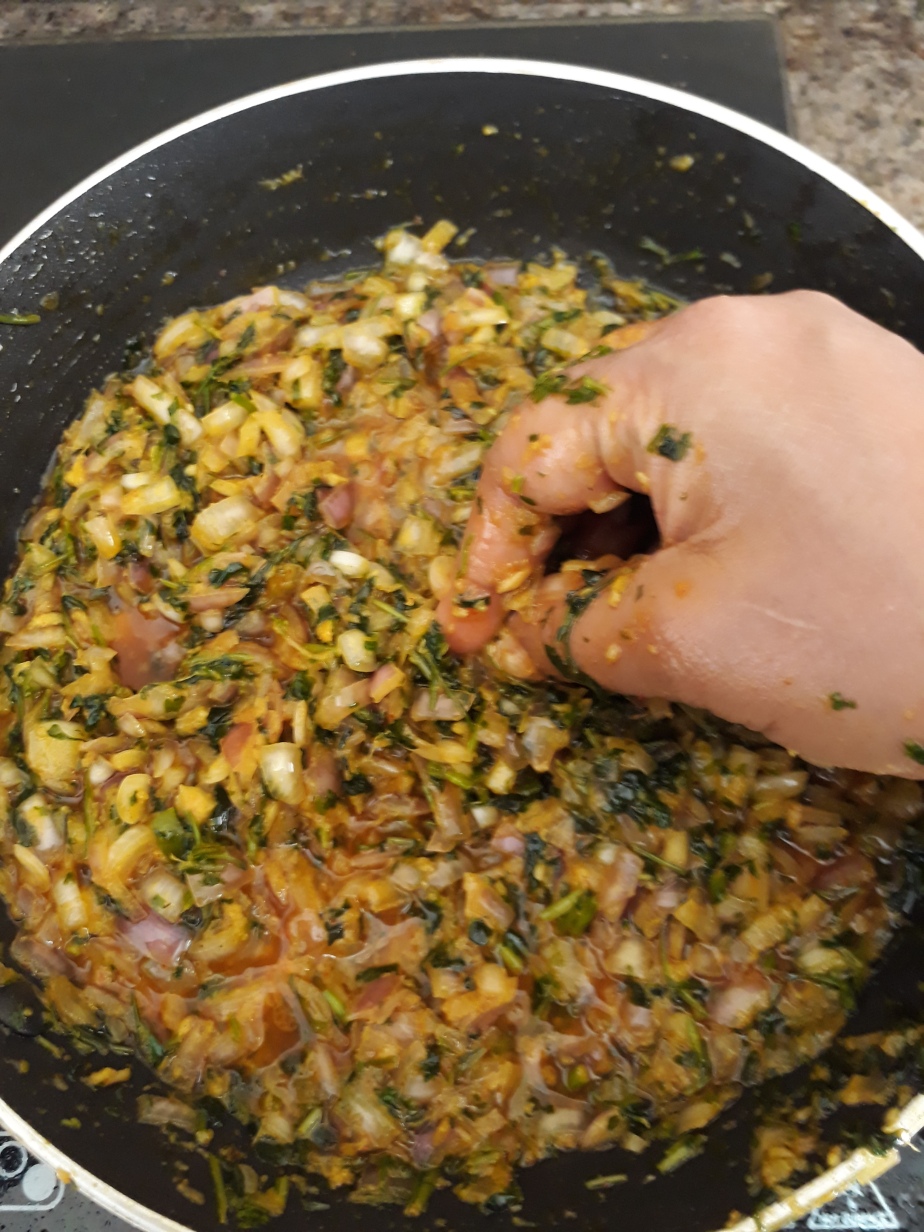 Add as much water as is required to wash the hand crushing the ingredients……. Now add in the pomfret pieces and coat with the masala……
Add as much water as is required to wash the hand crushing the ingredients……. Now add in the pomfret pieces and coat with the masala…… Cook on high flame and bring me his to a boil…….. As soon as it boils, turn the heat down…….. Cover the pan with lid…….
Cook on high flame and bring me his to a boil…….. As soon as it boils, turn the heat down…….. Cover the pan with lid……. Cook on slow flame till the fish is done…….. Remove the lid, tilt and turn the pan so that the whole thing comes together…….
Cook on slow flame till the fish is done…….. Remove the lid, tilt and turn the pan so that the whole thing comes together……. Don’t stir with ladle……. Switch off the flame….. Cover with lid and let the curry cool down a bit…….Serve with steaming hot rice.
Don’t stir with ladle……. Switch off the flame….. Cover with lid and let the curry cool down a bit…….Serve with steaming hot rice.

 Add prawns & salt…… Mix till prawns are well coated…….Sauté on high flame……. When it is almost done add the chopped coriander leaves……
Add prawns & salt…… Mix till prawns are well coated…….Sauté on high flame……. When it is almost done add the chopped coriander leaves…… Mix….. Take off the heat…… The filling is done…..Keep aside to cool.
Mix….. Take off the heat…… The filling is done…..Keep aside to cool.
 Mix thoroughly…….
Mix thoroughly……. Divide the mashed potatoes into two parts.
Divide the mashed potatoes into two parts. Spread the prawn filling evenly………
Spread the prawn filling evenly………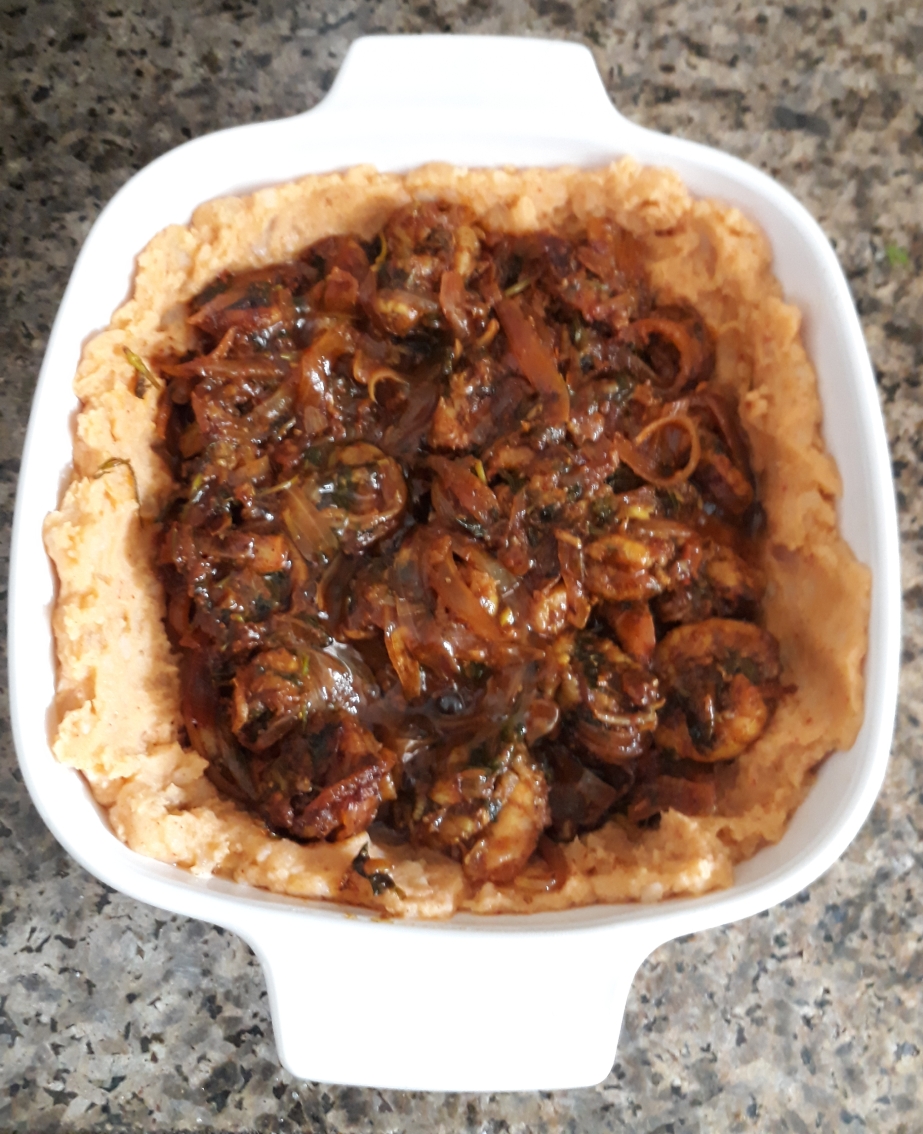 Cover the filling with the rest of the mashed potatoes…….. Seal from all ends…… Make pattern with a fork……..
Cover the filling with the rest of the mashed potatoes…….. Seal from all ends…… Make pattern with a fork…….. Brush the top with oil……. Bake, in a preheated oven, at 180 degree Centigrade for about 20-25 mins or till browned…….. Take out the pie from the oven……. Liberally brush with lightly beaten egg yolk…….. Bake for another 5-7 mins till it turns golden brown……
Brush the top with oil……. Bake, in a preheated oven, at 180 degree Centigrade for about 20-25 mins or till browned…….. Take out the pie from the oven……. Liberally brush with lightly beaten egg yolk…….. Bake for another 5-7 mins till it turns golden brown…… Serve hot.
Serve hot.